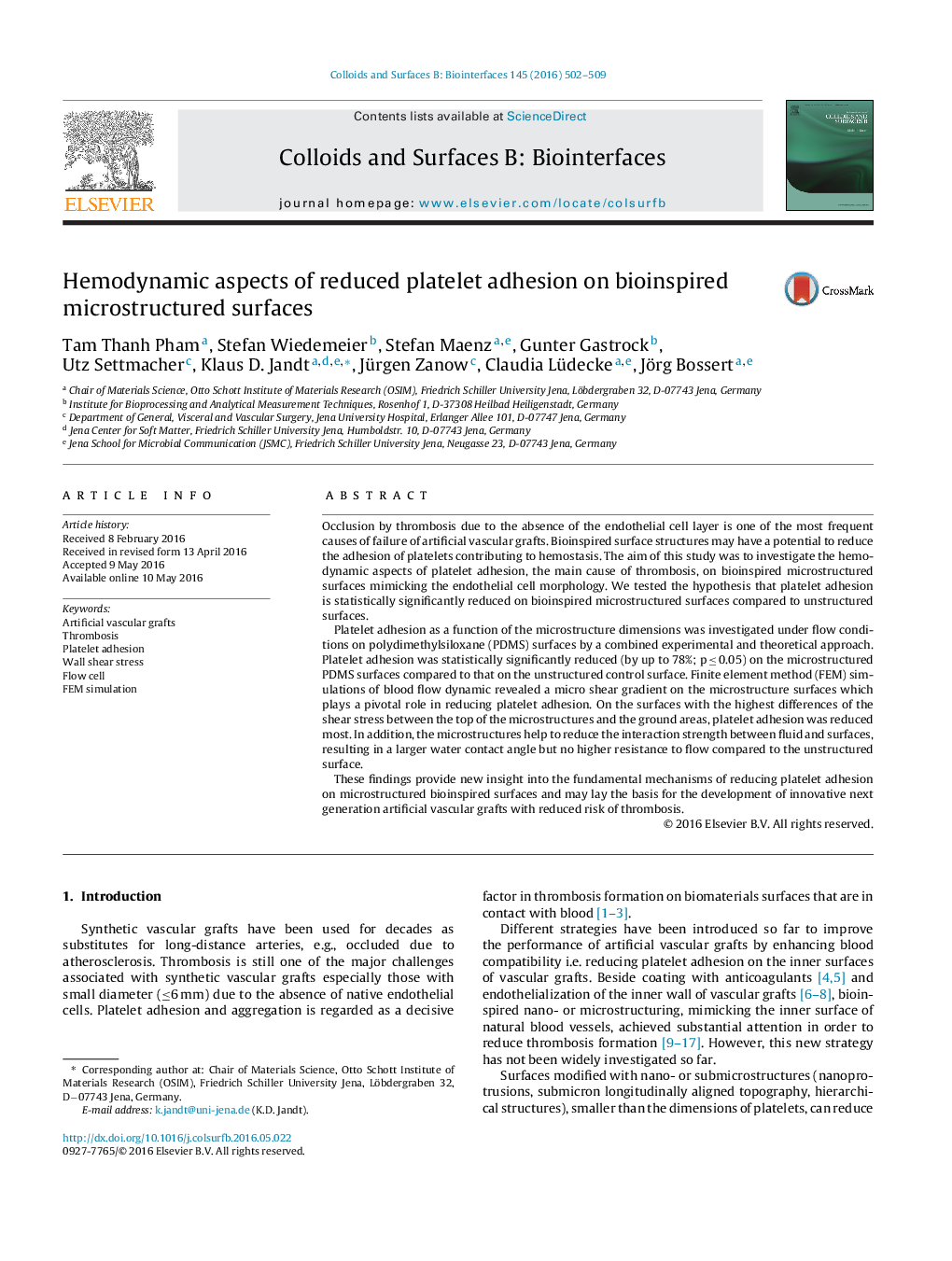| کد مقاله | کد نشریه | سال انتشار | مقاله انگلیسی | نسخه تمام متن |
|---|---|---|---|---|
| 598974 | 1454259 | 2016 | 8 صفحه PDF | دانلود رایگان |
• Bioinspired microstructured PDMS surfaces were created by soft-lithography.
• Platelet adhesion was reduced on microstructured surfaces by up to 78% (p ≤ 0.05).
• Microstructures cause local shear stress gradients, as confirmed by FEM simulations.
• Shear stress gradient depends on interspacing and height of the microstructures.
• High shear stress gradient leads to reduced platelet adhesion.
Occlusion by thrombosis due to the absence of the endothelial cell layer is one of the most frequent causes of failure of artificial vascular grafts. Bioinspired surface structures may have a potential to reduce the adhesion of platelets contributing to hemostasis. The aim of this study was to investigate the hemodynamic aspects of platelet adhesion, the main cause of thrombosis, on bioinspired microstructured surfaces mimicking the endothelial cell morphology. We tested the hypothesis that platelet adhesion is statistically significantly reduced on bioinspired microstructured surfaces compared to unstructured surfaces.Platelet adhesion as a function of the microstructure dimensions was investigated under flow conditions on polydimethylsiloxane (PDMS) surfaces by a combined experimental and theoretical approach. Platelet adhesion was statistically significantly reduced (by up to 78%; p ≤ 0.05) on the microstructured PDMS surfaces compared to that on the unstructured control surface. Finite element method (FEM) simulations of blood flow dynamic revealed a micro shear gradient on the microstructure surfaces which plays a pivotal role in reducing platelet adhesion. On the surfaces with the highest differences of the shear stress between the top of the microstructures and the ground areas, platelet adhesion was reduced most. In addition, the microstructures help to reduce the interaction strength between fluid and surfaces, resulting in a larger water contact angle but no higher resistance to flow compared to the unstructured surface.These findings provide new insight into the fundamental mechanisms of reducing platelet adhesion on microstructured bioinspired surfaces and may lay the basis for the development of innovative next generation artificial vascular grafts with reduced risk of thrombosis.
Figure optionsDownload as PowerPoint slide
Journal: Colloids and Surfaces B: Biointerfaces - Volume 145, 1 September 2016, Pages 502–509
